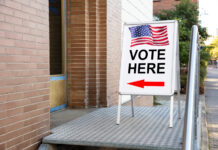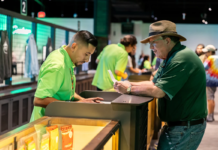It may be clichéd to say time flies when you’re having fun, but it is an apt statement when you’re working in an industry like cannabis. With each passing day, the industry grows broader and more robust around the world, but particularly in the United States and Canada. Last fall, the District of Columbia eliminated barriers that prevented many citizens from accessing medical marijuana cards. More recently, residents in Maryland and Missouri voted to legalize recreational use.
Amid these exciting changes, one thing has remained consistent: the growing popularity of edibles. Decades ago, the average patient or recreational consumer likely thought of edibles as brownies. Today, the medicinal and recreational benefits of cannabis can be enjoyed in a variety of form factors, including mints, sweeteners, gum, and a broad spectrum of other products. Since we haven’t examined the category in depth for more than a year, now might be a good time to take another look.
If there’s one word to describe the development of the edibles category over the past year, that word would be growth. In Canada, edibles grew from 4 percent of total sales in January 2021 to 5.8 percent of total sales in September 2022. Similarly, the category rose from 10.7 percent to 12.1 percent of total sales in the U.S. within the same timeframe. Digging deeper, Canadian provinces like British Columbia, Ontario, Saskatchewan, and Alberta all posted year-over-year growth of 38.7 percent or higher. To the south, U.S. states like Arizona, Michigan, Massachusetts, and Maryland recorded year-over-year growth of at least 13.5 percent. Furthermore, edibles’ market share ballooned to more than 11 percent in California, Colorado, Florida, Illinois, Maryland, Massachusetts, Michigan, Nevada, and Oregon. The data makes the rising popularity of edibles evident, but it is also important to explore why and how the growth is taking place.
The edibles sector has evolved just as the overall industry has. As previously mentioned, popular depictions of edibles in the 1990s and early 2000s often limited the category to pot brownies. Decades later, nothing could be farther from reality. In fact, brownies, blondies, and cereal bars compose only 1 percent of edibles sales in the U.S. and 0.6 percent of edibles sales in Canada. That doesn’t mean consumers in the U.S. and Canada have lost their sweet tooth. Across the two countries, gummies, chocolates, caramels, taffy, and chews account for more than 90 percent of edibles sales. More specifically, gummies account for nearly 70 percent of all edibles sales in Canada and roughly three-fourths of edibles sales in the U.S.
Given the success of gummies, chocolates, caramels, and chews, it is not surprising to learn more brands have expanded their product offerings to include infused sweets. In the U.S., the number of brands within the edibles marketplace increased by 4.7 percent from September 2021 to September 2022; the number of edibles brands in Canada increased nearly 75 percent during the same period.
One brand that found success in Canada is Jolt by Edison Cannabis Co. Within a year of launching, Jolt lozenges accumulated millions in sales, accounting for 87 percent of total sales within the segment in 2022. Sold in a 100mg pack, the line found a way to evade the country’s strict regulations that prevent brands from selling edibles with more than 10mg of THC per package. Moving forward, edibles likely will grow in popularity across Canada as brands follow Edison’s lead and/or Canada loosens regulations.
The number of brands in the edibles space likely will rise in the future, but the price of each product likely will not. In the U.S., the average item price dropped by 11.8 percent and the equivalized price decreased by more than 20 percent between January 2021 and September 2022. Similarly, Canada experienced an equivalized price decrease of 17 percent while recording a slight rise in the average item price. Taking advantage of falling prices, millennial and Generation X customers continue to drive sales within the category.
Older customers and women tend to purchase edibles more frequently compared to other categories in Canada. Female consumers account for 37.4 percent of total Canadian cannabis sales but nearly 50 percent of edibles sales. Like female consumers north of the border, U.S. customers older than forty-one purchase edibles at an above-average rate, making up 37 percent of total cannabis sales in the U.S. For edibles, these customers capture 51.3 percent of sales. In the years to come, Generation Z consumers also will become a major factor within this category as customers within the group reach the age of twenty-one.
The industry is on pace to generate $45.8 billion by 2025, and the success of the edibles category will play a substantive role in making this happen. The days of limiting the category to pot brownies are long gone. Whether it’s gum or ice cream, dynamic cannabis brands have found a way to incorporate the plant into a variety of edible products. Diversified product offerings, falling prices, and emerging brands have attracted younger female consumers, baby boomers, and Generation X customers. As more states legalize recreational use in the U.S. and Canada makes strides to accommodate emerging edibles brands, the future remains bright for this developing category.











[…] are an invaluable segment of the cannabis industry. From classic THC-infused brownies to flavorful fruit-filled gems, edibles have captivated the imagination of medical patients and […]